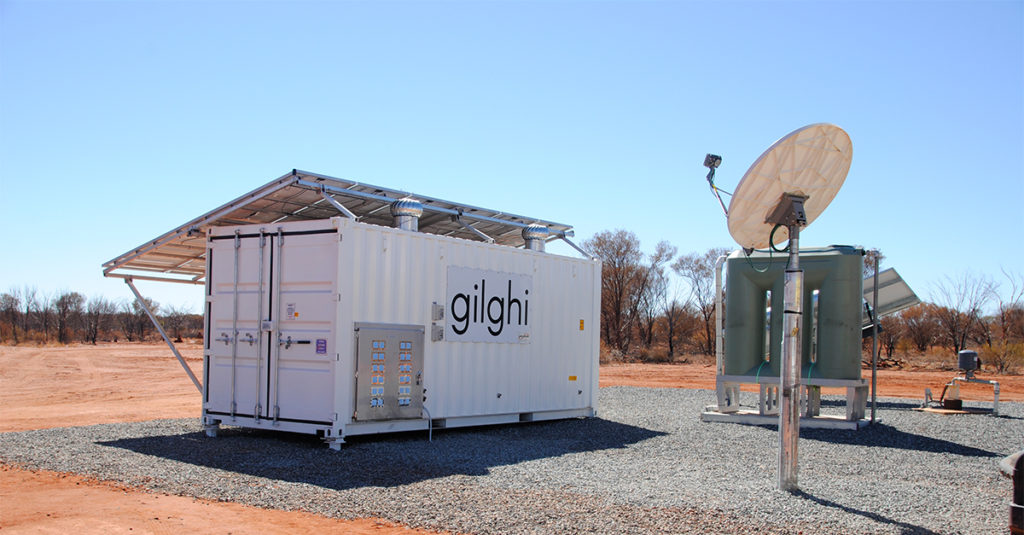Remote communities across Australia have a new option for affordable and continuous potable water, thanks to Project Gilghi, a self-sufficient, sustainable water treatment plant in a container.
The World Health Organisation has estimated that access to clean and safe water and sanitation could reduce the global disease burden by almost 10 per cent, but many remote Australian communities still lack access to it.
Project Gilghi, the brainchild of global engineering firm Aurecon and New South Wales Hunter-based electrical engineering company Ampcontrol, aims to change that. In the process, the project has been awarded an Australian Engineering Excellence Award, and is a finalist in next month’s national Sir William Hudson Awards.
“Gilghi represents a breakthrough, innovative, solar-powered water purifying system solution,” said Julian Briggs, Design Director, Water and Waste Water Treatment at Aurecon.
“The project provides a roadmap for how Australia and other countries can meet the ambitious target of the United Nations’ Sustainable Development Goal 6 — to provide safe and affordable drinking water for all by 2030.”
According to the Australian Bureau of Statistics, more than 48,000 Indigenous Australians in 694 locations nationwide rely on groundwater for their water supply. But the groundwater in arid areas can contain high concentrations of elements such as uranium. Lack of access to clean water also contributes to high prevalence of diseases such as trachoma.

The project also looks to solve other issues, Briggs said, such as the energy intensity of water treatment — which accounts for 13 per cent of the nation’s electricity use — and the expense of transporting clean water to remote communities.
“It was realised that the change in rate of technology has not been matched by a change in the way developments have been implemented in the water sector,” he explained.
“This presented an opportunity to capitalise on renewable power opportunities by comparing the levelised cost of electricity versus unvalued capital in the power grid system.”
How it works
The Gilghi system is designed to take feed water from a range of sources including bores, streams and brackish and saltwater.
The water is stored in an inlet tank before it is passed through three stages of treatment, including sand and carbon media filtration, a reverse osmosis (RO) unit comprised of cartridge filters, pressure booster pump and RO membranes, and finally an outlet tank and UV disinfection system.
Once treated, the water is transferred to a storage tank and made available for consumption. In terms of waste stream processing, an evaporation pond is built to treat the brine from the RO process.
“Traditionally, water treatment systems operate continuously, whereas Gilghi’s innovative design makes smart use of available solar power to run the plant and charge the batteries during the day,” Briggs said.
“The design took a modular approach to inclusion of the process units that provide the water treatment, allowing simple changes to the design to adapt to different feed water conditions.
“This approach reduces the amount of bespoke design required and thus the overall cost of delivery, historically a significant challenge for small-scale systems.”
The engineers developed the project over three years at Gillen Bore, a remote community about 75 kilometres north of Alice Springs. It was sponsored by the Northern Territory Government and developed for the Arrernte people as the custodians of the land and Alkupitja Land Trust.
Briggs said that installation time was another efficiency gain, with the fully off-grid unit “up and running within just a few days” and run remotely through satellite communications on renewable energy.
The critical operating functions have also been automated to help local communities to conduct routine maintenance on the devices, creating jobs and opportunities in the process.
Briggs said Project Gilghi was already a huge hit in the local community.
“Simply put, the happiness on the faces of the Gillen Bore community at the opening ceremony communicated the importance of this water to their livelihood better than words ever could,” he said.
Tune in to the Pinnacles Awards Ceremony on 9 November to find out who will take home the Sir William Hudson Award.